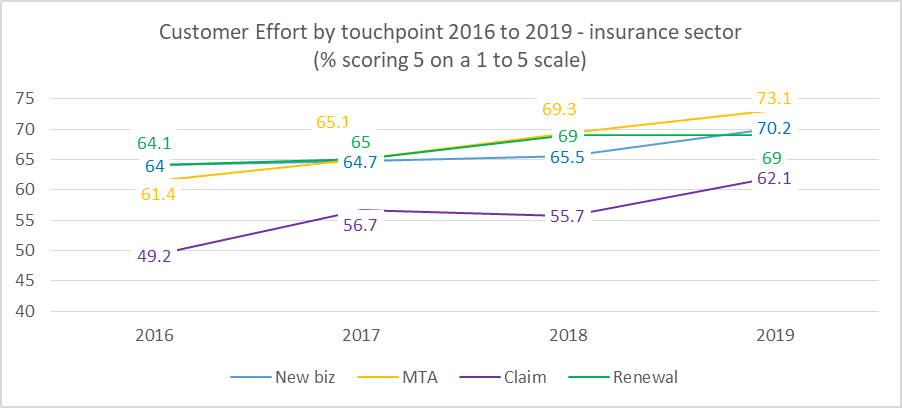

The following is an opinion article, written by Thomas Cowper Johnson, Insight Director, ServiceTick – A Davies Technology.
For the past decade ServiceTick, a Davies Technology, has been monitoring service levels for clients in the insurance sector; gathering transactional feedback from customers (i.e. feedback soon after the customer has had an interaction with the company). Our clients have used this data to inform and drive their operations and customer experience strategies and actions.
In March of this year, however, everything changed. Long established approaches to customer service were thrown out of the window when companies across the UK had to shift their workforce from office to home. According to a survey by Contact Doctors carried out in April 2020 some 84% of contact centres had moved to home working (up from 3.8% pre-lockdown).
Among our clients we witnessed herculean efforts to sustain service performance levels while moving staff to an effective home-working environment; and most were up and running within a couple of weeks. But for everyone moving from office to home significant change was required: new technology, new operations procedures, new workflows and new governance. Pressure on staff increased as colleagues went off sick, or were unavailable while new equipment was installed. On top of that a complete change of mindset was required for staff as they were coping with both tremendous changes in their personal life as well as their working practices.
What impact, if any did all this have on service performance?
After monitoring NPS and Customer effort via email surveys across a basket of more than 30 GI brands, we were able to benchmark how customers feel about their transactions with the insurance sector.

Source: ServiceTick GI client benchmarking
Since 2016 we have witnessed a steady improvement in the NPS scores across all our clients as a result of a stronger focus on customer experience. Clients have generated richer and deeper insights through Voice of the Customer programmes, like ServiceTick, and have used these to inform CX and operational strategies and effect change.
A similar picture can be seen in Customer Effort scores although the improvement in new business, MTA and renewal is not as marked.

Source: ServiceTick GI client benchmarking
Against this backdrop of improving CX metrics what impact did the coronavirus, lockdown and a seismic shift to home-working have on customer perception of service? In the charts below we have looked at the same data but over the shorter time period of Q2 19 to Q2 20.

Source: ServiceTick GI client benchmarking
Across our basket of GI brands we saw improvements in NPS at new business, MTA and renewal, while claims scores held steady. At all touchpoints NPS was higher in Q2 20 than it had been in Q2 19.
And a similar pattern was seen in Customer Effort

Source: ServiceTick GI client benchmarking
At first glance this may seem counterintuitive but there are a number of vital factors that led to improved customer metrics.
So, in summary, top marks for the insurance sector. They responded swiftly and effectively, supporting customers and staff alike. What remains to be seen is whether customers are as forgiving as the coronavirus crisis continues. We’ve started to see a downturn in metrics for many business partners which may indicate that sympathy and understanding from customers might be starting to wane. And we know that businesses are wrestling with the prospect of asking staff to return to their offices with all that this entails.
So, what does this mean for the future of CX? How will customer expectations change over the coming months and years? Time will tell…but we do know that the metrics collected through Voice of the Customer programs will help inform our business partners what matters most to their customers and help them to continue to shape their products and services around this.
